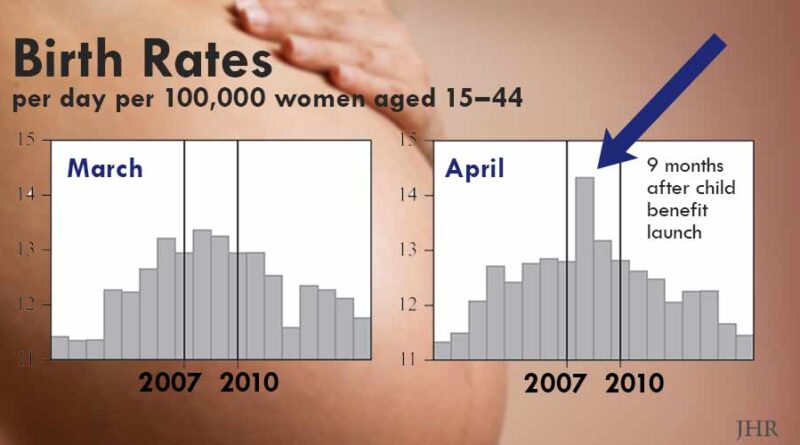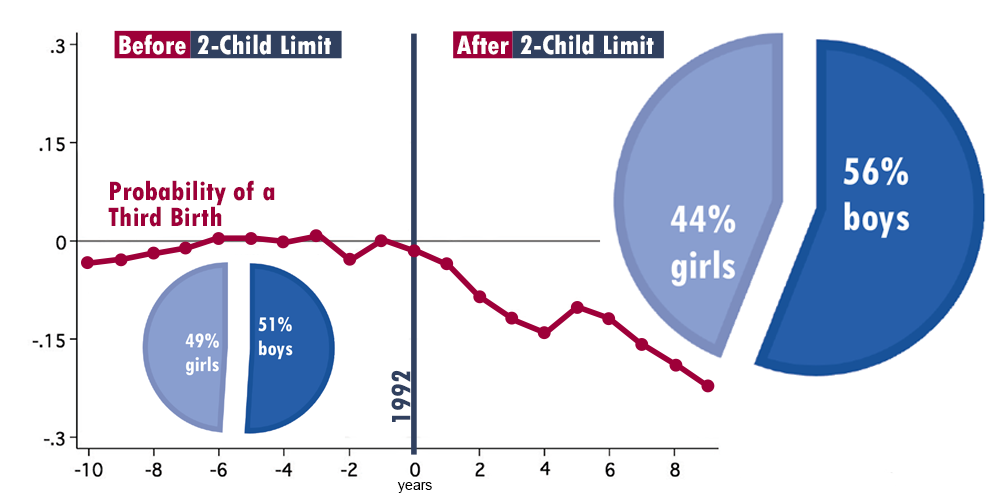Generous Child Benefits Can Increase Fertility
Many countries face low fertility rates, which can threaten the sustainability of old-age pension systems. Developed countries have introduced new family policies to increase births, but are these policies effective? Researchers Libertad González and Sofia Trommlerová investigate a maternity cash transfer program in Spain to gauge one policy’s impact on fertility.
They take advantage of the sudden introduction and later cancellation of a generous, universal maternity allowance in Spain to study the effect of cash transfers to families with children on fertility. Between July 2007 and December 2010, all women residing in Spain could apply for a one-time payment of €2,500 after giving birth.
Libertad González and Sofia Trommlerová use population-wide data to test for notable changes in the number of births and abortions at specific points in time after the benefit’s introduction and cancellation. They find that the subsidy’s introduction in 2007 increased birth rates by 3%, due to both an increase in conceptions and a drop in abortions. Following the benefit cancelation in 2010, the team observes opposite effects – a 6% drop in birth rates.
The cancellation effects were stronger in regions that were poorer and more affected by the Great Recession, which started in 2008. Moreover, the cash transfer affected both the total number of births and their timing, meaning that some women had additional children, while other women had children earlier.
The graphs show birth rates per day per 100,000 women aged 15–44, in calendar months March and April of years 2000–2017. Following the announcement and immediate implementation of the child benefit in July 2007, we expect additional births 9 months later, starting from April 2008. There is no visible change in trend prior to April, and a clear jump as of April 2008 (for at least the following 6 months).
What is unique about this study, and how can it help shape policy? Trommlerová: “Unlike previous work, we also examine fertility reactions via abortions. Additionally, we explore whether the introduction of the benefit could have led to a smaller fertility response than its later cancellation. And we find it did. Overall, our findings quantify the role of child subsidies as a policy tool for increasing birth rates, especially in low-fertility countries.”
Read the study in the Journal of Human Resources: “Cash Transfers and Fertility: How the Introduction and Cancellation of a Child Benefit Affected Births and Abortions,” by Libertad González and Sofia Trommlerová.
***
Libertad González is at Universitat Pompeu Fabra and the Barcelona School of Economics (@LibertadGonLu). Sofia Trommlerová is at Comenius University (previously UPF and BSE) (@SofiaTromm).
Libertad González received funding from ERC Consolidator grant 770958 (2018).




